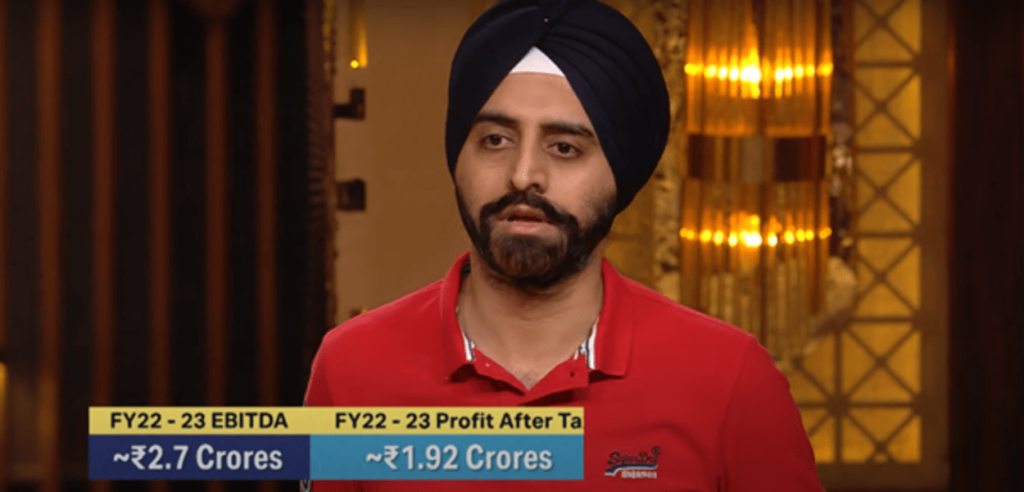In recent years, the refurbished Phone market in India has witnessed significant growth, driven by factors such as affordability, technological advancements, and changing consumer preferences. With the ever-increasing demand for smartphones, the refurbished segment has emerged as a viable alternative for budget-conscious consumers. Companies like Refit Global, Cashify, HyperXchange, Flipkart-owned Yaantra, Togofogo, and ControlZ have capitalized on this trend, offering refurbished devices at competitive prices. Unlike second-hand or old devices, refurbished phones undergo thorough renovation processes, akin to renovating an old house, ensuring they meet quality standards.

Established in 2017, Refit Global quickly gained traction in the refurbished electronics market. With a commitment to quality and innovation, they have sold over 15 lakh devices to date. Their offline model operates on a zero dead stock basis, ensuring efficiency and minimizing waste.
What sets Refit Global apart is their bootstrapped journey to profitability from day one. While competitors like Cashify boast larger volumes, Refit stands out as a player focused on offline business, catering to a segment often overlooked in the refurbished market.
Table of Contents
ToggleDevelopment of In-house diagnostic App
As Avneet and Saket stepped onto the stage of Shark Tank, representing Refit Global, they brought with them a vision to revolutionize the refurbished smartphone market. Their approach was not just about reselling used phones but about elevating them to a standard that rivals brand-new devices. With an emphasis on quality and reliability, Refit had developed an in-house diagnostic app to scrutinize every aspect of a phone, ensuring it met their rigorous standards before being offered to customers.
Beyond Repair: Refit Global's Comprehensive Approach to Smartphone Refurbishment
The heart of Avneet and Saket’s pitch lay in their commitment to transparency and trust. They operated on an exchange model, where customers traded in their old phones for a refurbished one. These exchanged phones underwent rigorous diagnostics, with each device checked against 47 parameters. Refit’s approach was not just about repair; it was about refurbishment, ensuring authenticity and reliability through tests conducted both before and after the repair process.
Refit Expands Reach with Online Platform
Additionally, Refit had ventured into their own online platforms called Refitglobal.com, expanding its reach beyond traditional brick-and-mortar stores. Their dedication to innovation and customer satisfaction was evident in their willingness to embrace both online and offline channels to cater to a diverse customer base.
Market Presence
Their strong distribution network spans both online platforms and traditional brick-and-mortar stores. This strategic approach allows Refit to reach a diverse customer base and establish themselves as a trusted name in the industry.
Refit Vision
Looking ahead, Refit has a bold vision—to become the one-stop solution in the refurbished market for every refurbished product. In a market characterized by disorganization, their goal is to streamline the process and offer customers a seamless experience, setting new standards for authenticity and reliability.
Financials

- Sales for FY 22-23: ₹187 Crores
- Gross Margin from B2C Business: 14%
- Profit After Tax (PAT) for FY 22-23: 1.08%
- Last Month Sales (Aug 2023): ₹35 Crores
- Net Profit in Aug 2023: Approximately ₹90-96 Lakh
- Average Selling Price: ₹7000
Deal and Negotiations
In the midst of negotiations with the Sharks, Avneet and Saket showcased the potential of the refurbished smartphone market, highlighting both the challenges and opportunities it presented. Ultimately, a partnership was formed – one that promised financial support, mentorship, and guidance, setting the stage for Refit to make waves in the industry.

Initial Ask:
- Refit initially asks for ₹2 Crores in exchange for 0.5% equity at a valuation of ₹400 Crores.
Offers:
- Amit and Anupam’s Offer: ₹2 Crores for 1% equity at a valuation of ₹200 Crores + ₹100 per unit sold as royalty until ₹4 Crores is recouped.
- Vineeta’s Offer: ₹2 Crores for 0.5% equity at a valuation of ₹400 Crores + 1.5% royalty until ₹4 Crores is recouped.
Counteroffers:
- Option 1: ₹2 Crores for 1% equity at a valuation of ₹200 Crores.
- Option 2: ₹1 Crore for 0.5% equity at a valuation of ₹200 Crores + ₹1 Crore debt.
Revised Offers:
- Amit and Anupam’s Revised Offer: ₹2 Crores for 1% equity at a valuation of ₹200 Crores + ₹70 per unit sold as royalty until ₹4 Crores is recouped.
- With Amit, Vineeta, and Anupam : ₹2 Crores for 1% equity at a valuation of ₹200 Crores + 1% royalty until ₹3 Crores is recouped.
As the episode drew to a close, viewers were left inspired by the resilience and determination of Avneet and their team. Their journey from the Shark Tank was a testament to the power of entrepreneurship, innovation, and collaboration. With a focus on quality, transparency, and customer satisfaction, Refit stood poised to redefine the refurbished smartphone market, setting new standards for authenticity and reliability.
Learning
Repairing vs. Refurbished: Understanding the Difference
In the world of electronics, particularly smartphones, the terms “repairing” and “refurbished” are often used interchangeably, leading to confusion among consumers. However, there are significant distinctions between the two processes, each with its own implications for device quality and longevity.
What is Repairing ?
Definition: Repairing involves fixing a specific issue or defect in a device to restore its functionality. This could include replacing a broken screen, fixing a malfunctioning battery, or repairing a faulty camera.
Example: Let’s say you drop your smartphone, resulting in a cracked screen. You take it to a repair shop, where technicians replace the damaged screen with a new one. After the repair, your phone functions normally, but only the specific issue—the cracked screen—has been addressed.
Implications: While repairing addresses immediate issues, it does not necessarily guarantee the overall performance or reliability of the device. Other components may still be prone to failure, and the device may not undergo comprehensive testing to ensure its long-term functionality.
What is Refurbished ?
Definition: Refurbished devices undergo a comprehensive renovation process aimed at restoring them to a like-new condition. This process involves thorough testing, repair or replacement of defective components, and cosmetic enhancements to improve aesthetics.
Example: Suppose a smartphone manufacturer receives a batch of returned devices due to minor defects such as scratches or cosmetic imperfections. These devices undergo rigorous testing to identify any underlying issues. Technicians then repair or replace faulty components, such as the battery or camera, to ensure optimal performance. Additionally, cosmetic flaws are addressed through cleaning, polishing, or replacing exterior parts. Once refurbished, these devices are indistinguishable from new ones and undergo stringent quality control checks before being offered for sale.
Implications: Refurbished devices offer several advantages over repaired ones. They undergo comprehensive testing and quality assurance processes, ensuring that all components meet stringent standards. As a result, refurbished devices often come with warranties or guarantees, providing peace of mind to consumers. Additionally, refurbished devices typically offer better value for money compared to new ones, making them an attractive option for budget-conscious buyers.
While both repairing and refurbishing aim to address issues with electronic devices, they differ significantly in scope and outcome. Repairing focuses on fixing specific problems, while refurbishing involves a holistic approach to renewing a device’s overall condition. Understanding these distinctions can help consumers make informed decisions when purchasing electronics, ensuring they get the best value for their money while minimizing the risk of future issues.
EBITDA vs. PAT: Understanding the Difference
EBITDA – Earnings Before Interest, Taxes, Depreciation, and Amortization is a measure of a company’s operating profitability before accounting for non-operating expenses. It provides insight into the core operational performance of a business by excluding items such as interest, taxes, depreciation, and amortization.
PAT – Profit After Tax represents the net profit earned by a company after deducting all expenses, including operating expenses, interest, taxes, depreciation, and amortization. It reflects the bottom-line profitability of a company available to its equity holders after accounting for all costs and expenses.
While EBITDA is often used to assess operational efficiency and compare companies within the same industry, PAT is a key metric for investors and shareholders as it represents the ultimate measure of a company’s profitability available to its equity holders.
Overall, both EBITDA and PAT provide valuable insights into a company’s financial performance, but they focus on different aspects of profitability and are used for different purposes by investors, analysts, and stakeholders.


1 thought on “Shark tank refurbished phones | ReFit Global | Saket Saurav and Avneet Singh | Shark Tank India 3”